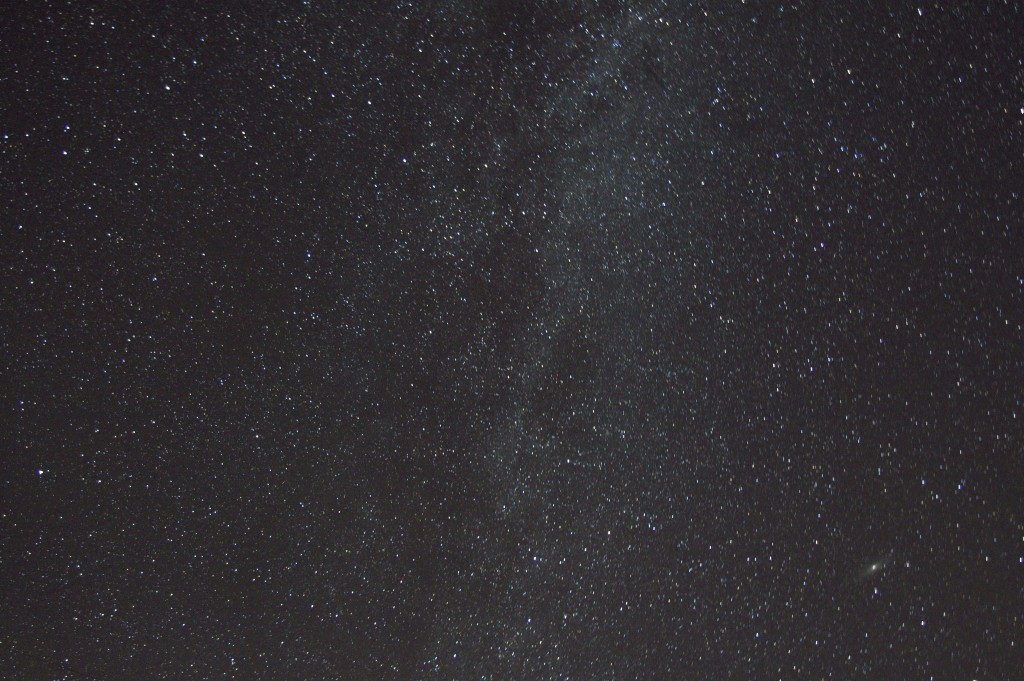Stargazing in Iowa
By Katie on October 14, 2015 in Blog
At the end of September, the total lunar eclipse mesmerized astronomy novices and experts alike. Yet as cool as the blood moon was, it was just one instance of the incredible events that occur in the night sky.
Stargazing is an inexpensive and fun family activity perfect for crisp fall nights, but there are a few things to keep in mind. Below, we've compiled a handy guide to get your adventure started.

Photo by David DeHetre via Flickr Creative Commons
WHERE TO GO:
“The best places to stargaze are in dark locations away from light pollution of cities,” says Emilee Richardson, Marketing and Communications manager for the Science Center of Iowa. “Within the city, big parks are the best places for viewing.”
See how much light pollution is in your area with this handy map. And if you're looking for something a little extra, check out these spots with low amounts of light across the state:
Eastern Iowa Observatory and Learning Center
Run by the Cedar Amateur Astronomers, an observatory in Cedar Rapids. The facility holds two telescopes and hosts public observation nights as well as guest speakers. Check out their website for a schedule of upcoming events.
Preparation Canyon State Park
Those looking for a challenge can head to Preparation Canyon State Park in western Iowa. This fairly untouched part of Loess Hills has walk-in campsites so gazers can easily spend a night under the stars.
Nine Eagles State Park
This park in the southern part of the state is open year-round and is the perfect spot for a night of stargazing. Far away from city lights, Nine Eagles is one of the lesser light-polluted parts of the state. Stargazers can stay the night at one of the campsites or simply lay down a blanket for a few hours.
Drake Municipal Observatory
You can even stargaze in the city! The City of Des Moines and Drake University’s observatory offers an eight and a half inch refracting telescope. The center is open to the public on Friday nights, and each week features a lecture and sky viewing, weather permitting. Check out the Fall schedule here.
WHAT TO BRING:
When it comes down to it, there's really not much you need besides a dark sky and your eyes. However, a few tools (that you likely already have at home) can make the experience more enjoyable:
Binoculars
When planets and stars are literally light-years away, they can be hard to spot with the naked eye. You can amp up your seeing power with binoculars or a telescope. Not only will you be able to see in more detail, but you can also focus in on a specific planet or part of the sky.
Blanket
The sky is most clear during the winter months, so if you're looking for the best view, bundle up and bring some blankets to keep warm. Hot is chocolate optional, but highly recommended.
Star Chart
Especially if you're just starting out, a star chart can help you identify constellations in the sky. They vary from month to month, and plenty of free, printable versions can be found on the Internet, like the one here. You can also find several Star Chart apps, but the light from your phone might make it harder for your eyes to adjust to the dark and see the stars.
OTHER FACTORS TO CONSIDER:
Stargazing is very much dependent on the weather, so be sure to go on a clear, cloudless night to optimize viewing.
According to Richardson, it’s also important to give your eyes time to adjust to the dark, which can take up to 20 minutes. “This is especially important if you're trying to catch meteor showers,” Richardson said.
Be sure to check out any up-and-coming astronomical events to help plan your night under the stars. Richardson likes to use the Astronomy Calendar of Celestial Events to keep track of what’s going on in the night sky.
Happy stargazing!
